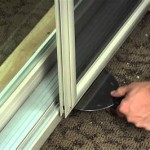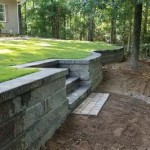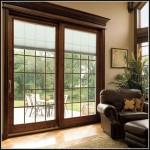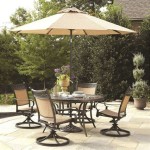Patio Bench Building Plans: A Comprehensive Guide
Constructing a patio bench is a rewarding project that enhances outdoor living spaces. By carefully selecting appropriate patio bench building plans, even individuals with limited woodworking experience can create a functional and aesthetically pleasing piece of furniture. This article provides a comprehensive guide to understanding, selecting, and implementing patio bench building plans, covering various design considerations, material choices, and construction techniques.
The selection of the right plan hinges on several factors, including the intended use of the bench, the available space on the patio, the desired aesthetic, and the builder's skill level. A well-chosen plan will provide detailed instructions, accurate measurements, and a comprehensive materials list, ensuring a successful and enjoyable building experience. Conversely, a poorly designed or incomplete plan can lead to frustration, wasted materials, and a final product that falls short of expectations.
Prior to embarking on the construction process, it is crucial to thoroughly review the chosen plans and ensure a complete understanding of each step. This includes familiarizing oneself with all dimensions, angles, and joinery techniques. It is also advisable to gather all necessary tools and materials before commencing construction, preventing interruptions and streamlining the building process.
Understanding Different Patio Bench Designs
Patio bench designs are remarkably diverse, ranging from simple, minimalist structures to elaborate, ornate pieces. Understanding the fundamental design categories is essential for selecting plans that align with personal preferences and the overall aesthetic of the outdoor space.
Simple Benches: These designs typically feature a straightforward construction process, utilizing basic woodworking techniques. They often consist of a few planks for the seat and backrest, supported by simple legs or frame structures. Simple benches are ideal for beginner woodworkers and those seeking a functional and unpretentious seating option.
Backless Benches: Backless benches offer a clean, contemporary look and can be easily incorporated into various outdoor settings. Their minimalist design allows for versatility in placement and usage. These benches typically consist of a single seat supported by sturdy legs or a frame.
Benches with Backrests: Benches with backrests provide enhanced comfort and support, making them suitable for extended periods of seating. These designs often incorporate a variety of backrest styles, ranging from simple vertical slats to more elaborate curved or contoured designs. The addition of a backrest adds complexity to the construction process, requiring more precise measurements and joinery techniques.
Storage Benches: Storage benches combine seating with integrated storage space, providing a practical solution for organizing outdoor items such as cushions, gardening tools, or children's toys. These designs typically feature a hinged seat that lifts to reveal a storage compartment. Constructing a storage bench requires a more advanced understanding of woodworking techniques and careful attention to detail to ensure a secure and functional storage space.
Adirondack Benches: Inspired by the classic Adirondack chair, these benches offer a relaxed and comfortable seating experience. They typically feature a contoured seat and backrest, providing ergonomic support. Building an Adirondack bench requires precise cutting and shaping of wood components, making it a more challenging project for beginner woodworkers.
Curved Benches: Curved benches add a touch of elegance and sophistication to any outdoor space. These designs often require the use of specialized woodworking techniques, such as steam bending or lamination, to achieve the desired curvature. Constructing a curved bench is a more advanced project that demands patience, precision, and a thorough understanding of woodworking principles.
Selecting the Right Materials for Your Patio Bench
The choice of materials significantly impacts the durability, aesthetic appeal, and maintenance requirements of a patio bench. Selecting materials that are appropriate for the outdoor environment is crucial for ensuring a long-lasting and visually pleasing final product.
Wood: Wood is a popular choice for patio benches due to its natural beauty, versatility, and relatively easy workability. Different types of wood offer varying levels of durability, weather resistance, and aesthetic appeal. Some of the most commonly used wood species for outdoor furniture include:
Cedar: Cedar is naturally rot-resistant and insect-repellent, making it an excellent choice for outdoor applications. It has a warm, reddish-brown color and a distinctive aroma. Cedar is relatively lightweight and easy to work with, but it can be more expensive than other wood species.
Redwood: Redwood is another naturally rot-resistant wood that is well-suited for outdoor use. It has a rich, reddish-brown color and a beautiful grain pattern. Redwood is slightly more durable than cedar, but it can also be more expensive.
Teak: Teak is a highly durable and weather-resistant hardwood that is prized for its natural oils, which protect it from rot and decay. It has a golden-brown color that weathers to a silver-gray patina over time. Teak is the most expensive of the commonly used wood species for outdoor furniture, but it offers exceptional longevity and requires minimal maintenance.
Pressure-Treated Lumber: Pressure-treated lumber is softwood that has been chemically treated to resist rot and decay. It is a more affordable option than cedar, redwood, or teak, but it lacks the natural beauty and aesthetic appeal of these species. Pressure-treated lumber requires regular sealing or painting to prevent it from cracking and splintering.
Metal: Metal is a durable and weather-resistant material that can be used to construct patio benches. Metal benches often feature a sleek, modern design and can be powder-coated or painted to protect them from rust and corrosion. Aluminum and steel are the most commonly used metals for outdoor furniture.
Composite Materials: Composite materials, such as recycled plastic lumber, offer a low-maintenance and environmentally friendly alternative to wood. These materials are resistant to rot, decay, and insect infestation, and they do not require painting or sealing. Composite materials are available in a variety of colors and textures, allowing for a customizable aesthetic.
When selecting materials, it is crucial to consider the local climate and environmental conditions. In areas with high humidity or frequent rainfall, it is essential to choose materials that are highly resistant to rot and decay. In areas with intense sunlight, it is important to select materials that are resistant to fading and cracking.
Essential Tools and Techniques for Patio Bench Construction
Successful patio bench construction relies on the proper utilization of essential tools and woodworking techniques. Familiarity with these tools and techniques is crucial for achieving accurate cuts, strong joints, and a professional-looking final product.
Essential Tools:
Saw: A saw is essential for cutting lumber to the required dimensions. A circular saw is ideal for making long, straight cuts, while a jigsaw is useful for cutting curves and intricate shapes. A handsaw can also be used for more precise cuts, particularly in tight spaces.
Drill/Driver: A drill/driver is used for drilling holes and driving screws. It is essential for assembling the various components of the bench and creating secure joints.
Measuring Tools: Accurate measurements are crucial for successful patio bench construction. A measuring tape, square, and level are essential for ensuring that all components are cut to the correct size and that the bench is level and square.
Sanding Tools: Sanding is essential for smoothing rough edges and surfaces, preparing the wood for staining or painting, and creating a professional-looking finish. Sandpaper of varying grits, a sanding block, and an orbital sander are useful tools for sanding.
Clamps: Clamps are used to hold components together while glue dries or screws are driven. They are essential for creating strong and durable joints.
Woodworking Techniques:
Cutting Techniques: Accurate cutting is essential for ensuring that all components fit together properly. It is important to use sharp blades and to follow the cutting lines carefully.
Joinery Techniques: Joinery techniques are used to create strong and durable connections between the various components of the bench. Common joinery techniques include butt joints, lap joints, and mortise and tenon joints.
Sanding Techniques: Proper sanding techniques are essential for creating a smooth and even surface. It is important to start with coarse-grit sandpaper and gradually work up to finer-grit sandpaper.
Finishing Techniques: Finishing techniques are used to protect the wood from the elements and to enhance its aesthetic appeal. Common finishing techniques include staining, painting, and sealing.
By mastering these essential tools and techniques, individuals can confidently tackle a wide range of patio bench building projects and create beautiful and functional outdoor furniture.

Diy Sy Garden Bench Free Building Plans The Creative Mom

Diy 2x6 Outdoor Bench W Back Plans Free

Diy Outdoor Bench In 30 Mins W Only 3 Tools Plans By Rogue Engineer

Diy Sy Garden Bench Free Building Plans The Creative Mom Furniture Outdoor

Diy Sy Garden Bench Free Building Plans The Creative Mom Wood Outdoor Wooden Furniture

Diy Sy Garden Bench Free Building Plans The Creative Mom

How To Make Simple Timber Bench Diy Family Handyman

Double Chair Plans How To Build A Bench With Table

Pool Bench Plan Wood Landscape Garden Patio Porch Deck Outdoor Israel

18 Free Garden Bench Plans For Your Outdoor Paradise Insteading








